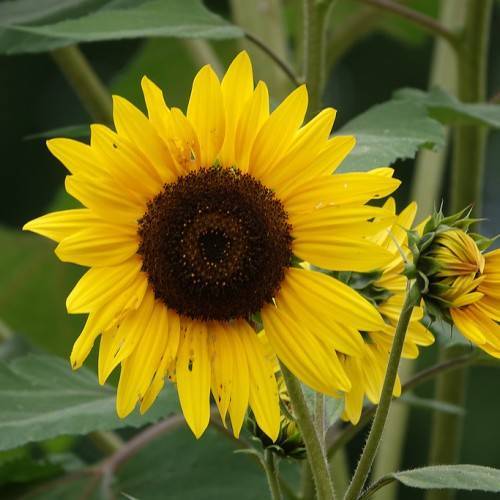
common sunflower
Helianthus annuus
Cycle:
Annual
Watering:
Minimum
Hardiness Zone:
2 - 11
Flowers:
Flowers
Sun:
Full sun
Fruits:
Fruits Ready In Autumn
Edible:
Yes
Leaf:
Yes
Growth Rate:
High
Maintenance:
Low
Drought Tolerant:
Yes
Care Level:
Medium
watering
Sunflowers need a lot of water to thrive -- about 1-1.5 inches per week. To maintain ideal soil moisture, water your common sunflowers deeply when the top 1-2 inches of soil is dry. Monitor your soil moisture levels consistently so you can adjust your watering schedule accordingly. Soak the ground and about 3 feet of air around the plants every 5 to 7 days.
sunlight
Common sunflowers require a minimum of 6 hours of direct, unfiltered sunlight throughout the day. However, for optimum growth, they should receive 8 to 12 hours of direct sunlight, with midday being the best time for sun exposure. Planting in a south-facing area is the best for common sunflowers as it is likely to get maximum exposure of the sun’s rays throughout the day.
pruning
Common sunflowers prefer well-drained soil and full sun, and can tolerate some light shade. Pruning should be done after the first round of blooms have faded, generally in the late summer or fall after the seed heads have been harvested. For best results, prune the sunflower plants back to about 18 to 24 inches in height. Be sure to remove all dead, diseased, or damaged stems and branches from the sunflower plants. Prune away any weak or spindly stems and any stems that are not producing blooms. Cut the plants down to their base, close to the ground and move on to the next plant. Perform any necessary fertilizing after pruning and continue to water and fertilize your sunflowers properly. Regular pruning will encourage the growth of new buds and blooms for the next growing season.
